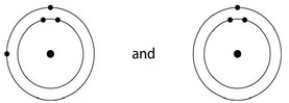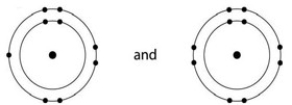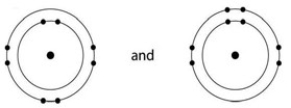Multiple Choice
Which one of the following pairs of neutral atoms would be most likely to form ions and thus an ionic bond?
A) 
B) 
C) 
D) 
E) 
Correct Answer:

Verified
Correct Answer:
Verified
Related Questions
Q1: You have two beakers. One contains pure
Q2: Which of the following is TRUE of
Q3: A strong acid like HCl _.<br>A) dissociates
Q4: The complexity and variety of organic molecules
Q6: Refer to the following figure to answer
Q7: Knowing the atomic mass of an element
Q8: The partial negative charge in a molecule
Q9: What does it mean to say a
Q10: A covalent chemical bond is one in
Q11: You need to represent a molecule to